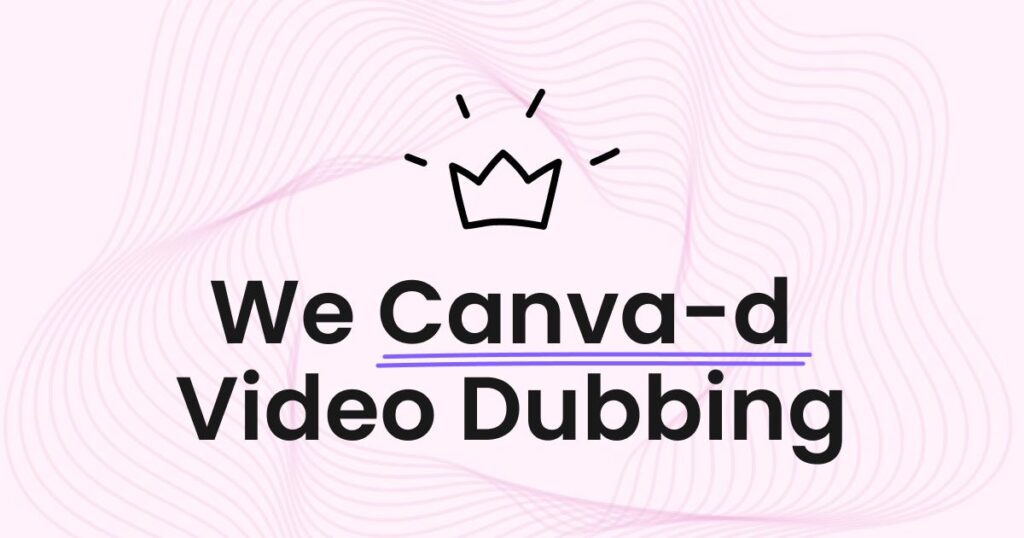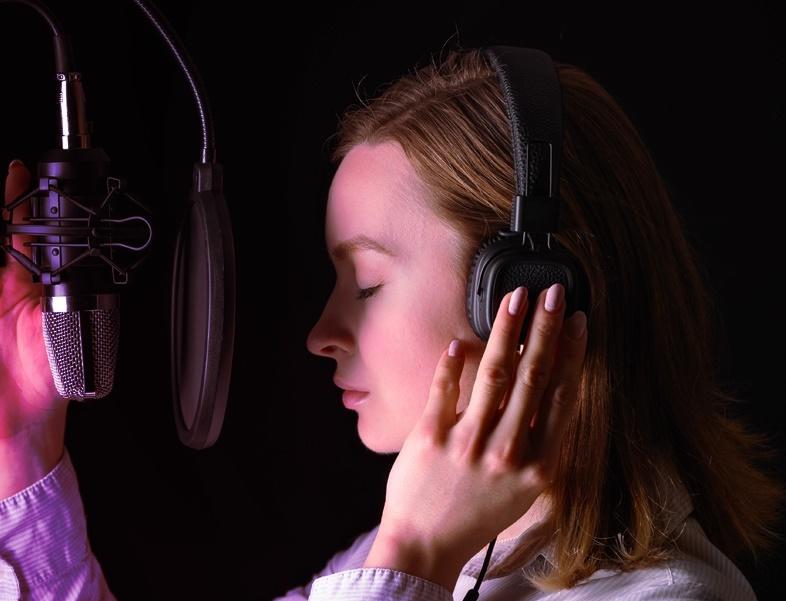Have you caught wind of the latest trend in the creator economy? Dubbing is emerging as the next big thing, with YouTube spearheading the movement through its groundbreaking multi-language feature. Creators far and wide are experiencing a surge in their reach and impact, thanks to this innovative tool. However, if you’re finding yourself a bit bewildered by all the buzz, fear not – this blog is your comprehensive guide to unraveling the mystery behind video dubbing. We’ll delve into the nitty-gritty, equipping you with all the essential knowledge you need to navigate this exciting terrain.
What is Video Dubbing?

Dubbing is essentially a post-production process where the original voice-over of the video content is replaced with one in another language. It does not simply mean a literal translation of the content but keeping the timing, feel, and delivery of the dialogues in sync is of utmost importance. In that sense, dubbing serves as a medium to cross the language barrier, making your content relatable and understandable for a larger, multicultural audience.
Why is Dubbing Important?

In the dynamic field of content creation where keeping the audience engaged is of paramount importance, language should not be a constraint. Thus, dubbing comes to the rescue. Dubbing allows you to reach a larger audience who, despite finding your content appealing, might not understand it entirely due to the language barrier. By dubbing your videos, you make your content accessible and enjoyable for everyone, defining a niche for your channel in the global arena. Dubbing YouTube videos proves to be advantageous in multifold ways:
- Expanding Audience Base: Your content will penetrate larger markets and reach a global audience by being accessible in multiple languages.
- Improving Viewer Comprehension: Audiences are likely to comprehend and engage with the content material better if it’s presented to them in their native language.

- Cultural Sensitivity: Dubbing doesn’t only involve language translation but also cultural adaptation. That way, the content is delivered in a manner that a particular group of audiences can better resonate with.
- Boosting SEO: Dubbed videos can be optimized to appear in search results in multiple languages, which boosts the channel traffic and presents opportunities for growth.
Steps in Dubbing YouTube Videos
The dubbing process is a meticulous one and involves the following steps:

- Script Translation: Begin with translating the original script to the desired language. While doing so, it’s key to keep the essence of the content intact.
- Voice Actor Selection: After translation, the next task is selecting a voice actor. The actor must be able to exhibit the necessary tone and emotions that the video requires.
- Recording: The voice actor then records the translated script, keeping in line with the visual sequences and actions being performed in the video.
- Post-Production: The final step involves merging this voice-over with the video’s visuals and music. It’s crucial to edit and mix these components well to ensure a smooth playing experience.
AI Dubbing: A Game-Changer for YouTubers

Artificial Intelligence (AI) has been causing ripples in video production practices, dubbing being one of them. AI’s algorithms can pick up speech patterns and replicate human voices in numerous languages. That has automatized the dubbing process to a great extent. Here’s how AI dubbing stands to benefit you:
- Speed: AI brings effectiveness in the dubbing process and speed is one of them. It significantly reduces the time taken to dub videos, facilitating faster releases to cater to the international audience.
- Consistency: AI brings uniformity in vocal tone and pronunciation across the board, ensuring a consistent viewing experience.
- Cost-Effective: With AI, the need to hire multiple voice artists per language is eliminated, which means major cost savings for you.
Choosing an AI dubbing solution

When selecting an AI dubbing solution, you should look for features like a rich library of voices, multi-language support, easy-to-use interface, and the ability to integrate with other video editing software. Also, be sure to test out the solution with some of your existing videos to see how effectively it can match the voiceovers to the on-screen visuals and maintain the tone of the video.
Want to give it a shot? Try Dubverse Dub to create your first dubbed video.
Tips for Effective Dubbing

As you delve into the practice of dubbing, these tips might come handy for getting it right:
1. Quality Audio Recording
Prioritize recording high-quality audio for your voiceover. Use a good microphone and a quiet recording environment to minimize background noise. Crystal-clear audio ensures your message is conveyed effectively and maintains viewer engagement.
2. Script Preparation
Plan your script meticulously. It should match the timing of the original dialogue, ensuring proper synchronization with the video. A well-structured script also helps maintain a natural flow and avoids awkward pauses or rushed delivery.
3. Matching Tone and Emotion

The dubbed voice should match the tone and emotion of the original content. If you’re dubbing a video that’s meant to be informative, maintain a professional tone. For humorous content, ensure your voice over delivers the jokes effectively.
For instance, imagine you’re dubbing a cooking tutorial. If the original host was excited and energetic, your dubbed voiceover should also reflect the same enthusiasm to keep the audience engaged.
4. Lip-Sync and Timing
Pay close attention to lip-sync and timing. The dubbed audio should match the lip movements of the original speakers to create a seamless viewing experience. Adjust your voiceover pace and timing as needed to ensure a natural match.
5. Background Music and Sound Effects
Your video includes background music or sound effects, make sure they complement the dubbed voice over. Adjust the audio levels to avoid drowning out the voice or making it hard to hear. A well-balanced mix enhances the overall production value.

6. Editing and Post-Production:
Editing is crucial. Cut, splice, and adjust the audio to perfectly sync with the visuals. Remove any mistakes, long pauses, or unnatural elements from the dubbing process. Use audio editing software to fine-tune the audio quality. However, if you use AI dubbing tools, your process would reduce to 1/5th of the time.
The ultimate goal is to provide an enjoyable viewing experience. Poorly dubbed videos with mismatched audio or low-quality voice overs can deter viewers. Ensure your dubbing enhances the content and doesn’t distract from it.
Ready to Dub Your YouTube Videos?

In conclusion, as the landscape of content creation continues to evolve, video dubbing stands out as a potent force shaping the future of online engagement. With YouTube’s multi-language feature paving the way for creators to connect with diverse audiences, the opportunities are boundless. By mastering the art of dubbing, you open doors to global reach and deeper connections, transcending language barriers and cultural divides. Armed with the insights shared in this blog, you’re now equipped to embark on your dubbing journey with confidence.
So, go ahead, add the magic of seamless dubbing to your videos, and watch your content resonate in new and exciting ways across the digital world.


